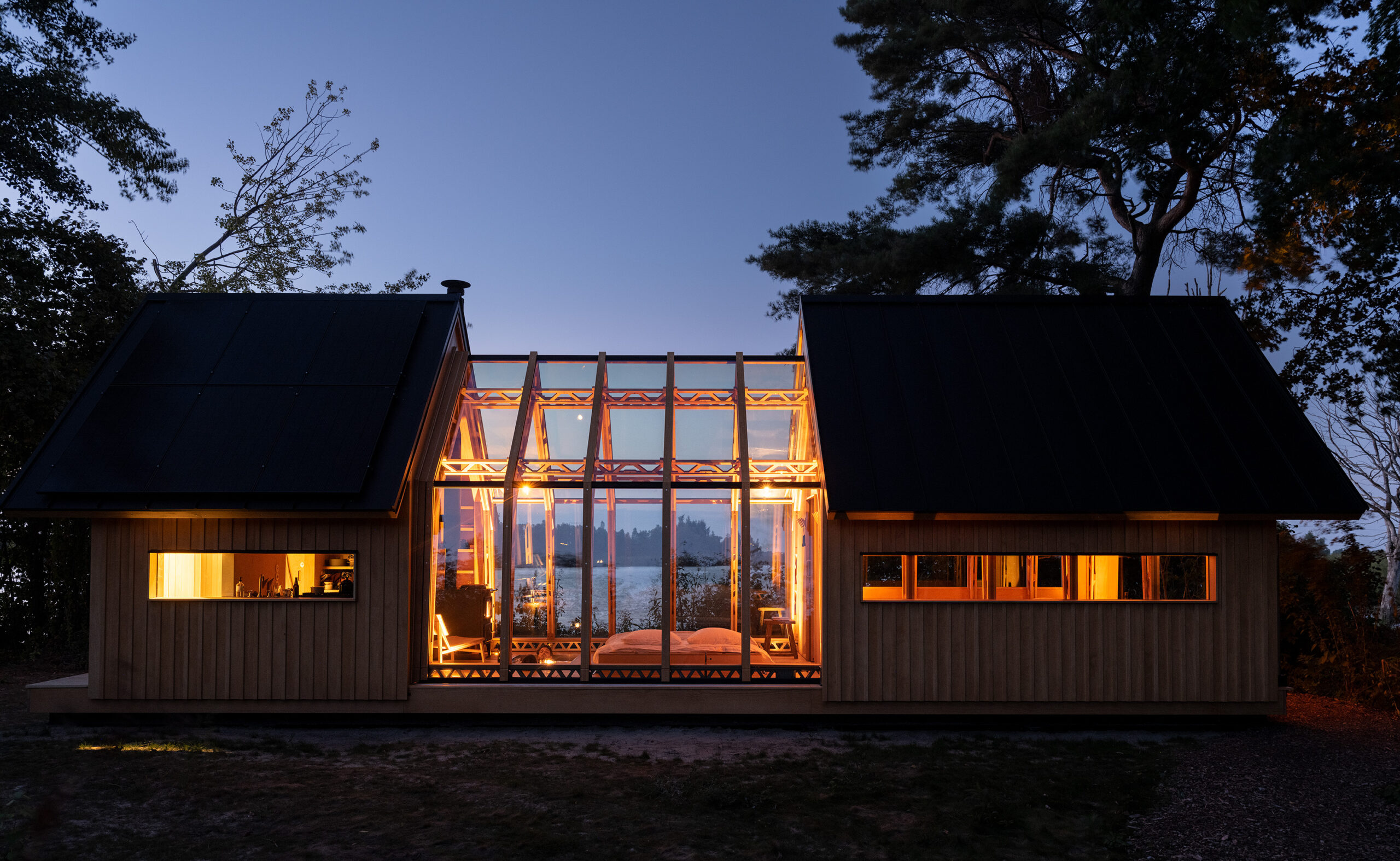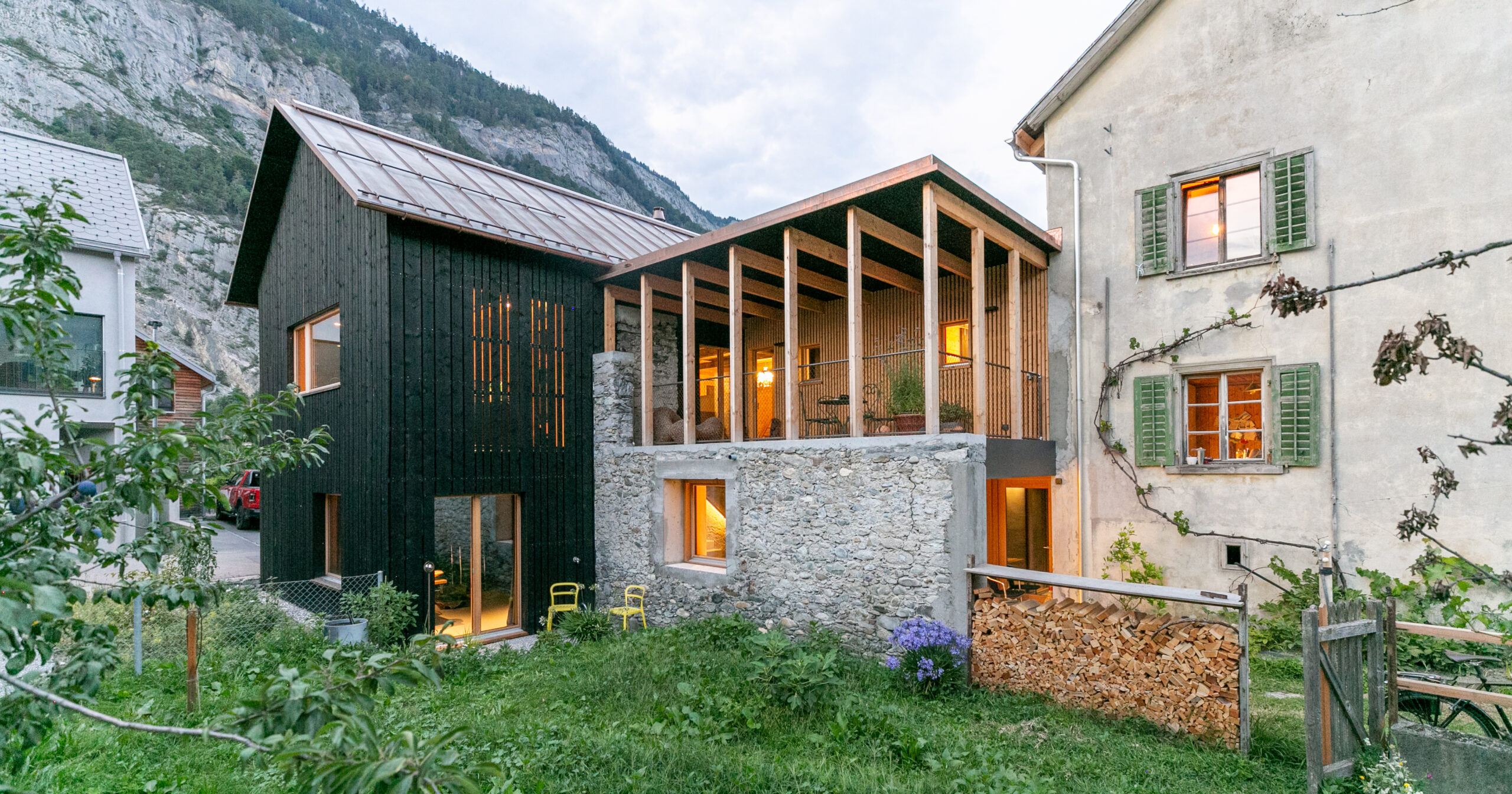Architects: Want to have your project featured? Showcase your work through Architizer and sign up for our inspirational newsletters.
Gone are the days when architects could just focus on creating permanent one-purpose structures and get away with it. In fact, in today’s dynamic world the ability to improvise, adapt (and often overcome too) is a much-needed feature for the spaces we use.
In a design sense, this means that no matter the typology, there is an evident need for spaces that can have multiple functions and embrace different layouts depending on the moment’s demand. This collection spotlights a few such designs, from bookstores and offices with movable walls and modular furniture to designs that unfold like a tent to homes that open and close to nature as desired.
And what better way to display these than through the ultimate shape-shifting medium — the almighty GIF? So, without further ado, we present eight dynamic projects showcased through engaging gifs that just keep on giving.
IWI
By JUAN RUIZ + AMELIA TAPIA, Quito, Ecuador
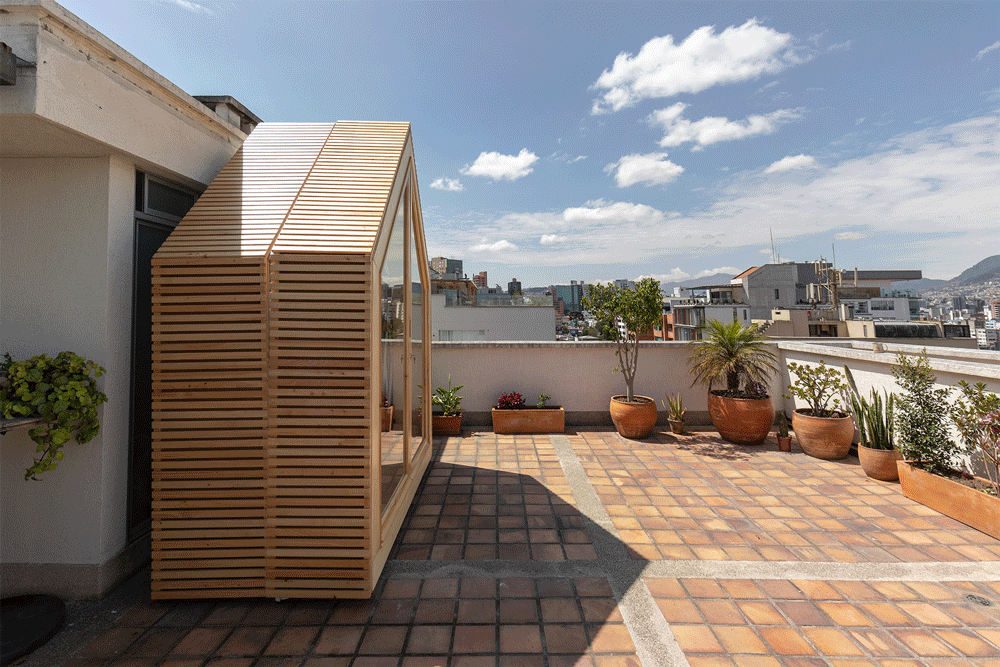 Architects Juan Ruiz and Amelia Tapia designed IWI as an innovative living solution that can be extended or compressed, depending on its users’ needs. Constructed using CNC milling technology, IWI transforms high-quality wood into a prefabricated structure that is easy to assemble, disassemble and mass produce.
Architects Juan Ruiz and Amelia Tapia designed IWI as an innovative living solution that can be extended or compressed, depending on its users’ needs. Constructed using CNC milling technology, IWI transforms high-quality wood into a prefabricated structure that is easy to assemble, disassemble and mass produce.
When extended, it becomes a living space that contains everything necessary to fulfill different functions, such as office/stud, yoga studio, relaxation space, workshop, meeting room or guest room.
Yijian Cafe
By Golucci Interior Architects, Shanghai, China
Finalist, 11th Annual A+Awards, Bars & Wineries

 With its innovative “wooden box” concept, Yijian Cafe embraces a dynamic, adaptable design. The box, designed to open and close, usually stays open, inviting visitors into a space dedicated to the craft of coffee.
With its innovative “wooden box” concept, Yijian Cafe embraces a dynamic, adaptable design. The box, designed to open and close, usually stays open, inviting visitors into a space dedicated to the craft of coffee.
Inside, a long metal coffee bar runs through the center, serving both functional and aesthetic purposes by linking the wooden box to the cafe’s concrete structure. Visible through a glass door, the coffee roaster showcases the brand’s forward-looking aspirations. All in all, this straightforward yet complex design allows users to enjoy a premium cup of coffee while taking in the beauty of Shanghai’s historic streets.
Ollie Studio Workplace Interior Design
By Within Beyond Studio, Beijing, China
Finalist, 11th Annual A+Awards, Architecture +Low Cost Design
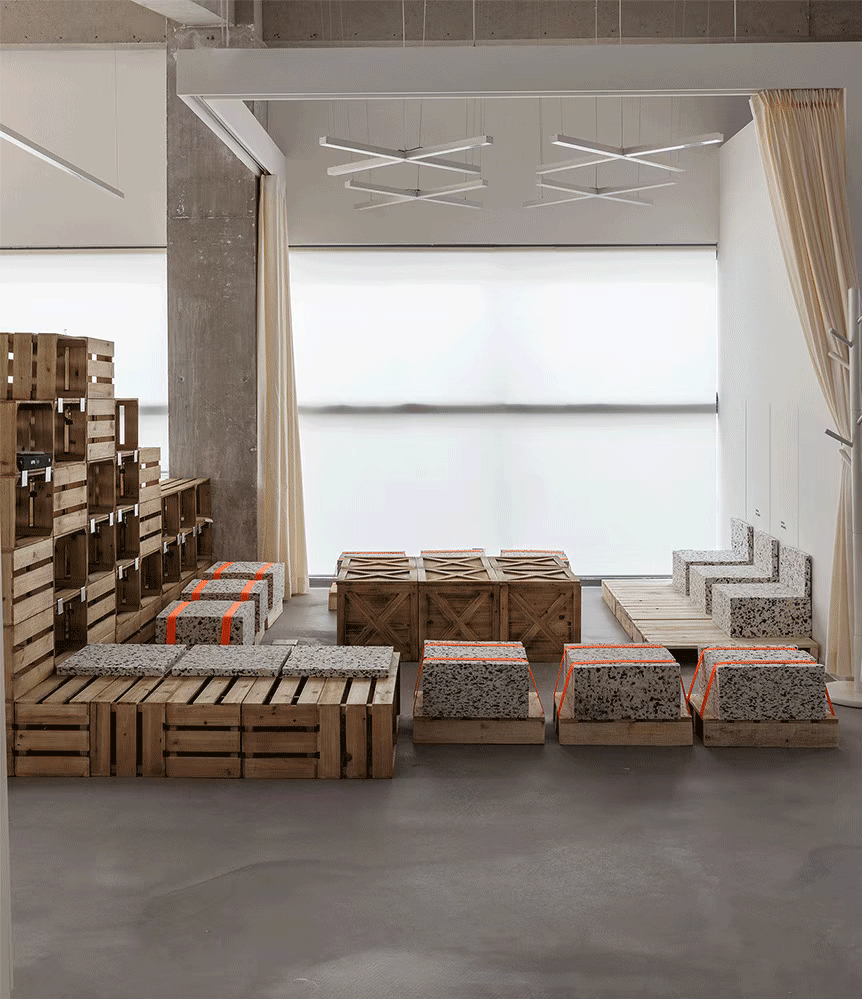
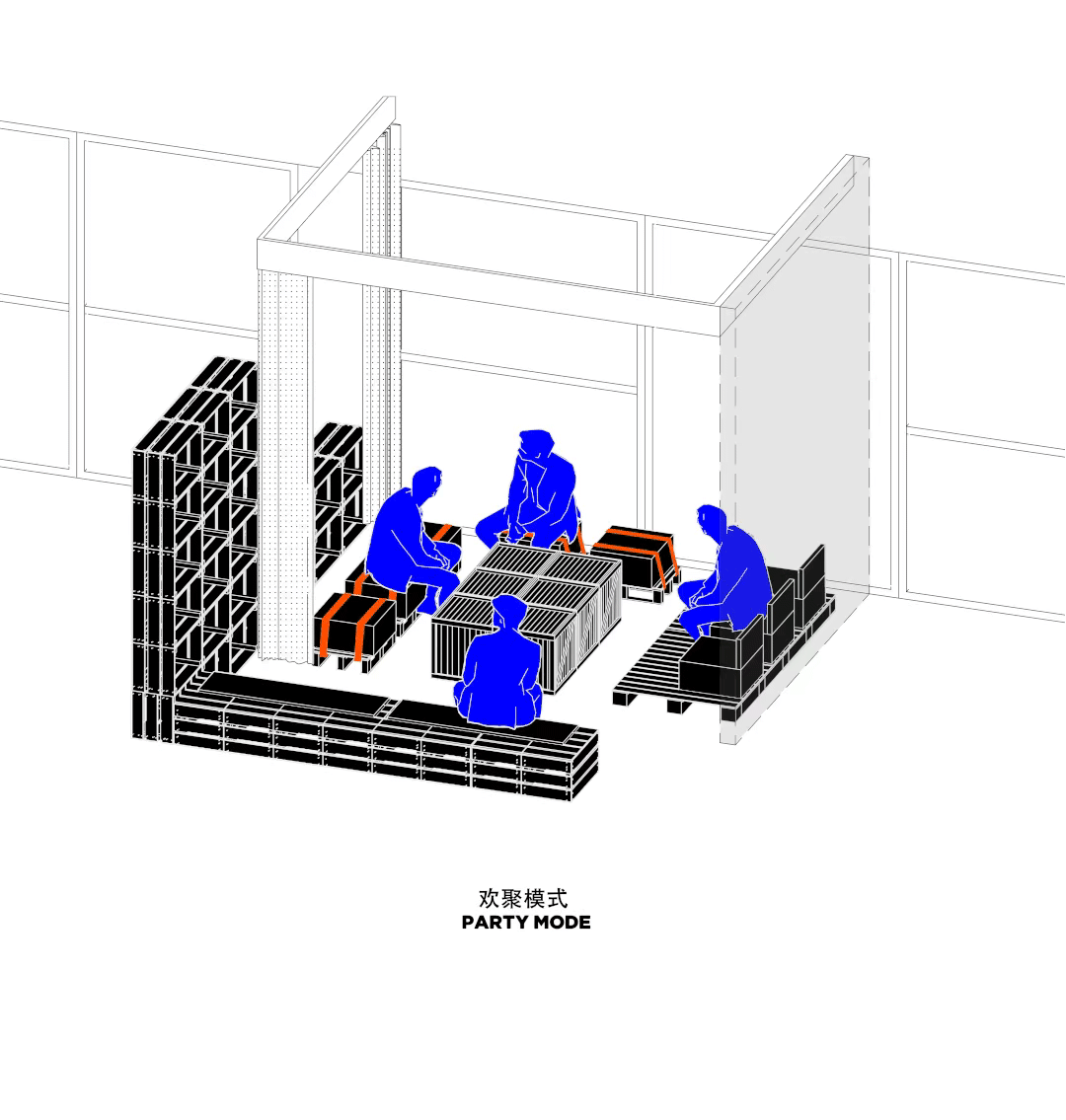 Using modular, DIY furniture and iron mesh partitions, this office turns a dense work environment into a flexible space that can shift from workstations to a seminar or game room as needed.
Using modular, DIY furniture and iron mesh partitions, this office turns a dense work environment into a flexible space that can shift from workstations to a seminar or game room as needed.
The design cleverly integrates second-hand materials like wood pallets and fruit boxes into versatile furniture, creating an adaptable and creative setting. This approach not only maximizes the use of a small area but also showcases how a tight office can adapt to various functions with smart, cost-effective design.
ANNA Collection
By Cabin ANNA, Netherlands
 ANNA is a cabin designed as a living space that adapts to the user’s needs and can change depending on weather conditions or personal preferences. The unique design includes two protective sliding shells: an outer wooden shell and an inner double-glazed shell. The shells can be adjusted to various positions, allowing users to either cozy up inside or fully embrace the outdoors.
ANNA is a cabin designed as a living space that adapts to the user’s needs and can change depending on weather conditions or personal preferences. The unique design includes two protective sliding shells: an outer wooden shell and an inner double-glazed shell. The shells can be adjusted to various positions, allowing users to either cozy up inside or fully embrace the outdoors.
ANNA is modularly developed, which results in a short installation time on site (around five days) and minimal ecological disruption. Due to dry connections, it can be disassembled and moved at any time without leaving a trace in nature.
Mandacaru House
By Arquitetura Nacional, Votorantim, Brazil
Mandacaru House features a wooden brise soleil that adjusts to let in sunlight or keep things private. This opening and closing mechanism allows the residents to modulate their environment according to their needs. Meanwhile, its expansive glass walls ensure the social areas remain connected to the garden and central courtyard.
The adaptability of Mandacaru House exemplifies how architecture can evolve with its occupants, offering spaces that are both intimate and expansive, perfect for the ever-changing dynamics of family life and social gatherings.
Mumokuteki Concept Bookstore
By LUO studio, Beijing, China
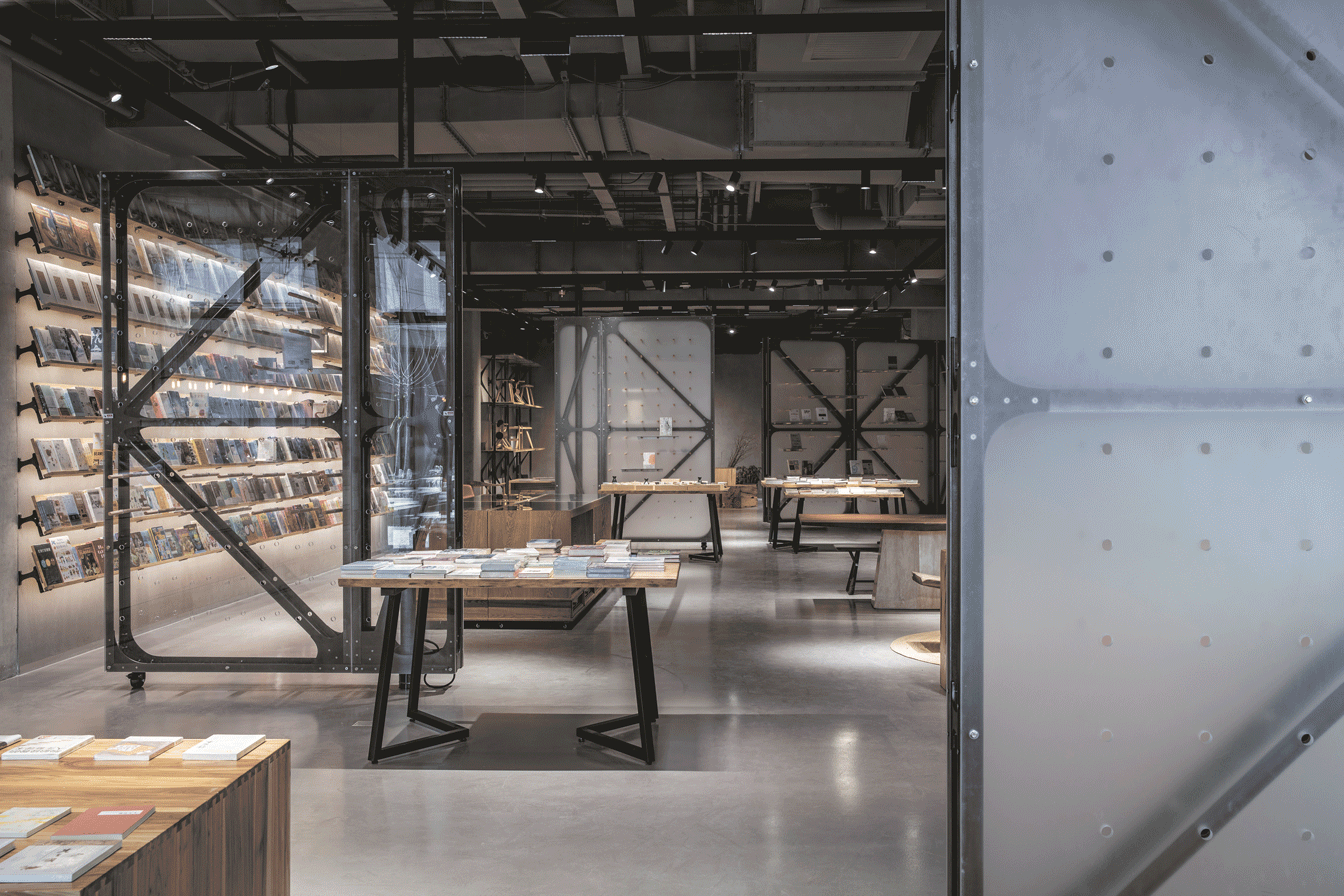
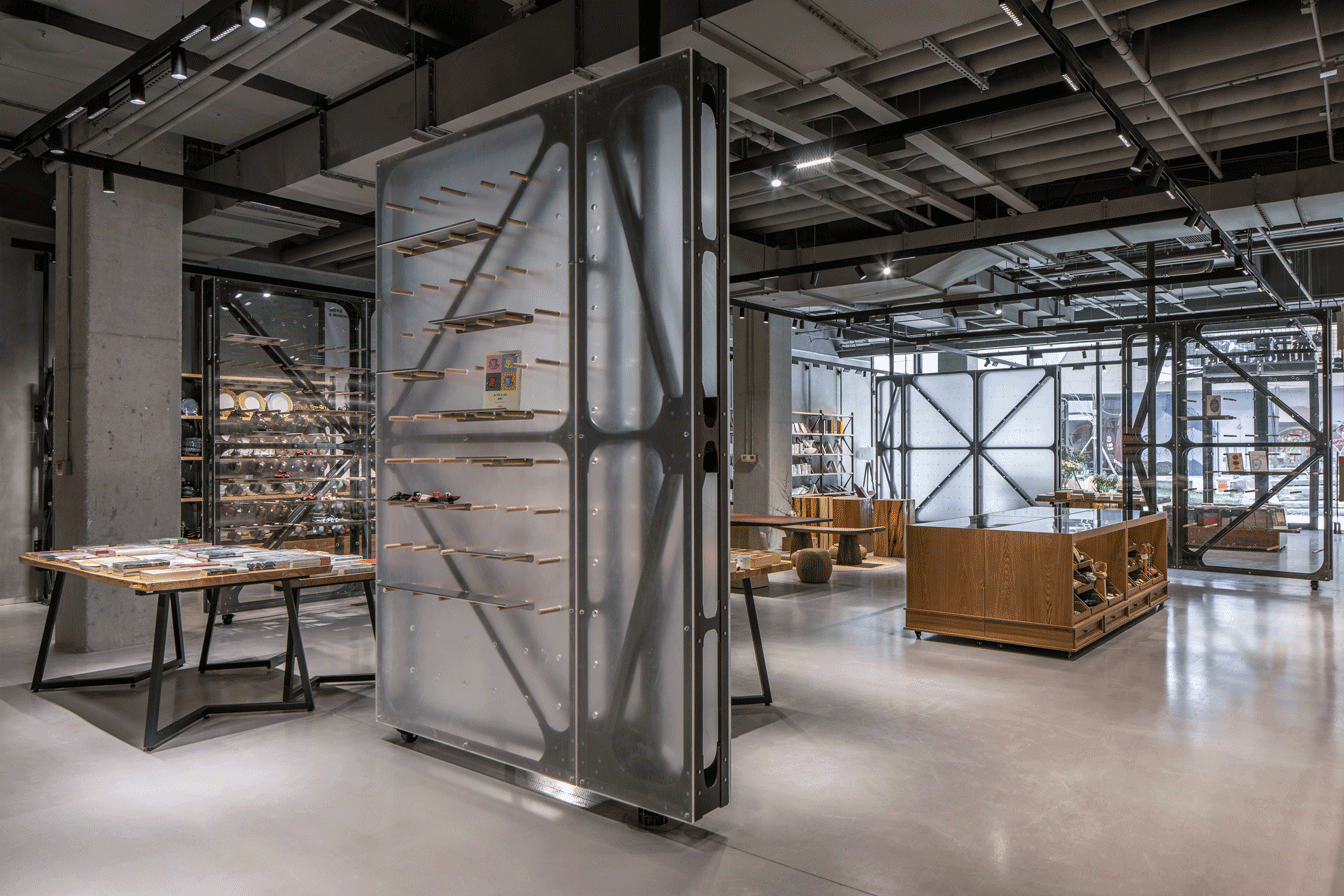 Mumokuteki Concept Bookstore features rotating screen walls as its central elements, constructed with angle steel profiles and enveloped in a mix of transparent and translucent materials. These walls pivot to either open up the space for an integrated feel or create separate, intimate areas for reading and exhibitions.
Mumokuteki Concept Bookstore features rotating screen walls as its central elements, constructed with angle steel profiles and enveloped in a mix of transparent and translucent materials. These walls pivot to either open up the space for an integrated feel or create separate, intimate areas for reading and exhibitions.
This flexibility allows the bookstore’s layout to shift from a unified, open space to distinct zones for different activities, enabling a versatile environment that caters to both solitary exploration and communal events.
17.6-square-meter Apartment
By A Little Design, Taipei, Taiwan
Finalist, 7th Annual A+Awards, Architecture +Living Small
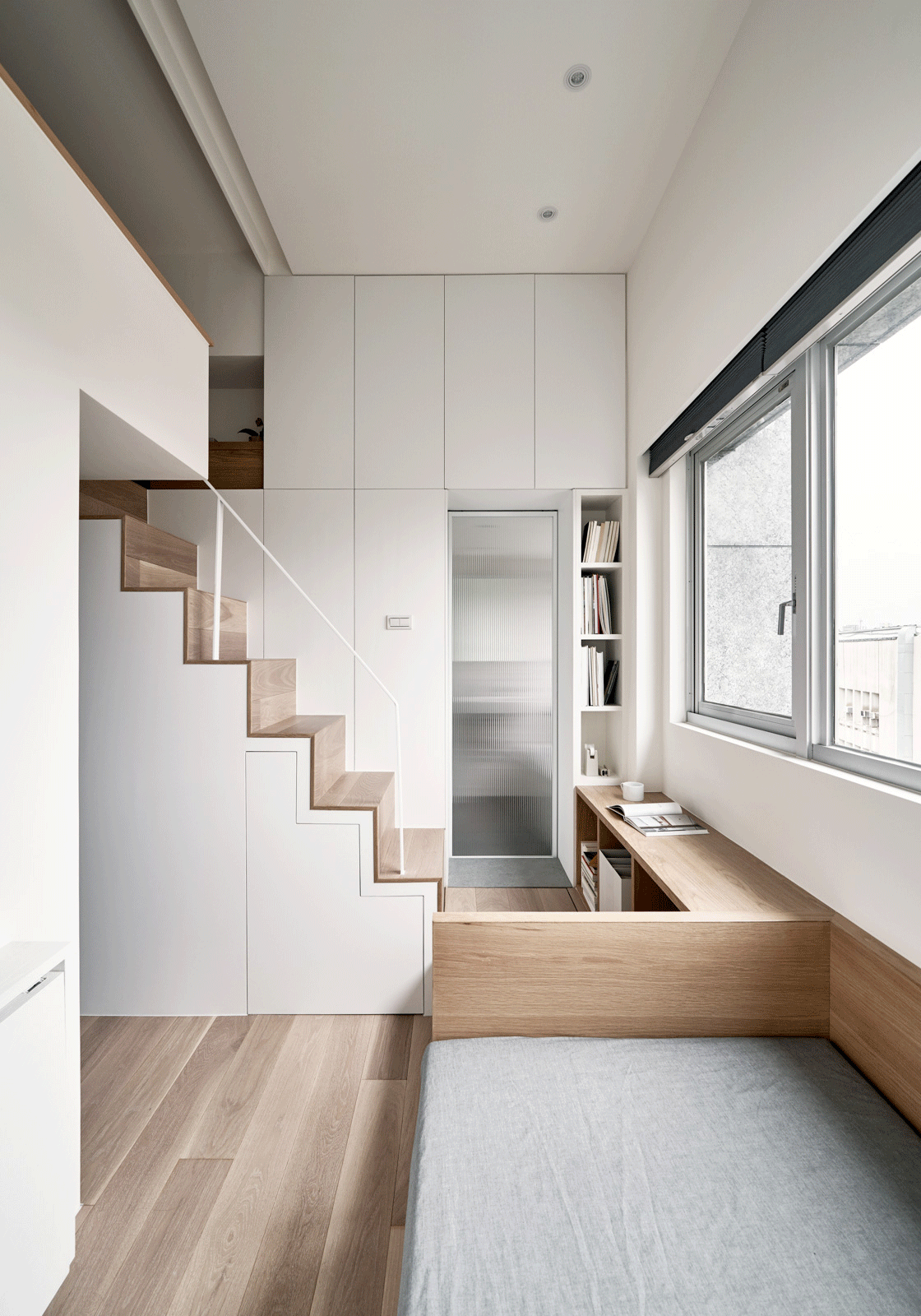
 Once a piano teaching studio, this 190 square foot (17.6 square meter) apartment in Taipei transforms into a fully functional residence. By swapping the kitchen and bathroom locations, it opens up the area, making room for all the essentials. The kitchen packs in appliances and storage, while the bathroom, now better ventilated and lit, uses space efficiently.
Once a piano teaching studio, this 190 square foot (17.6 square meter) apartment in Taipei transforms into a fully functional residence. By swapping the kitchen and bathroom locations, it opens up the area, making room for all the essentials. The kitchen packs in appliances and storage, while the bathroom, now better ventilated and lit, uses space efficiently.
A cleverly designed loft increases living space, accessible by stairs that also serve as extra storage. Below, a sofa doubles as a guest bed, and a foldable table works for both dining and office tasks. This compact apartment proves that with thoughtful design, small spaces can offer big living solutions, perfectly fitting the needs of city dwellers.
Sharifi-ha House
By Nextoffice, Tehran Iran
Finalist, 4th Annual A+Awards, Architecture +Façades
 Imagine a home that changes its shape and mood with the seasons or just because you feel like it. Well, that’s exactly how Sharifi-ha House was designed. The house has special rotating rooms that can turn, open up for summer breezes, or close up tight to keep warm and cozy during cold winter days.
Imagine a home that changes its shape and mood with the seasons or just because you feel like it. Well, that’s exactly how Sharifi-ha House was designed. The house has special rotating rooms that can turn, open up for summer breezes, or close up tight to keep warm and cozy during cold winter days.
It’s built from four key parts: two stationary volumes, a central void, and the transformative mobile volume. The rotating mechanism is surprisingly straightforward, borrowing technology used in theater scene shifts or car exhibition turntables. When the rotating rooms are open, the house embraces the outdoors, merging inside and outside living. And when they are closed, they still get an abundance of natural light into the central areas.
Architects: Want to have your project featured? Showcase your work through Architizer and sign up for our inspirational newsletters.
